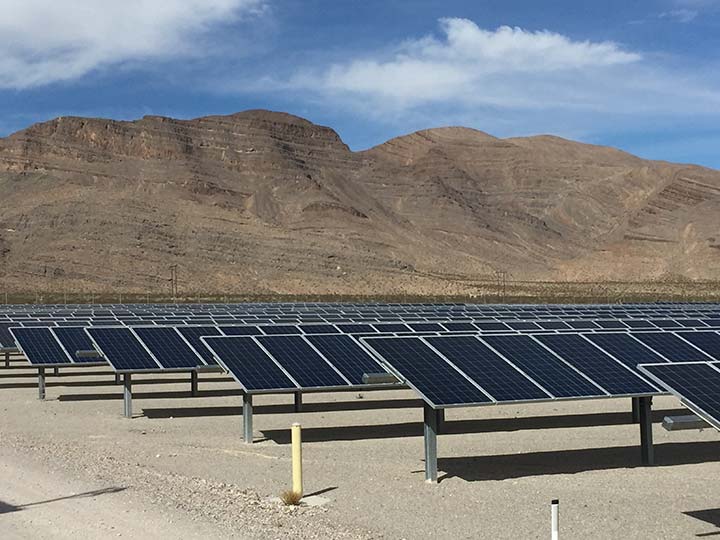Effect of Cell Cracks on Module Power Loss and Degradation
DuraMAT will improve understanding of the evolution of power loss due to photovoltaic (PV) cell cracks through a combination of field testing, simulation, data analytics, and accelerated testing. Cells within modules may become cracked due to damage at installation or environmental events.
Expected outcomes include:
- Set crack thresholds for large-scale PV plant commissioning, operations, and maintenance based on knowledge of crack progression and effects on performance and safety
- Reduce uncertainty in levelized cost of electricity (LCOE) predictions through improved warranty and insurance contracts and better plant performance
- Inform module designs that are less susceptible to cracking
- Enable improved qualification test procedures
- Improve simulation capabilities around module reliability and durability as it relates to cracks and metal fatigue.
This project is a collaboration between the Electric Power Research Institute, National Renewable Energy Laboratory, Lawrence Berkeley National Laboratory, and Southern Company.
Core Objective
Location
Electric Power Research Institute (EPRI)
National Renewable Energy Laboratory (NREL)
Lawrence Berkeley National Laboratory (LBNL)
Southern Company
References
William B. Hobbs, Steve Johnston, and Braden Gilleland, “Ultraviolet Fluorescence Bleaching Rates for New Cell Cracks,” 2020 IEEE PVSC (https://www.ieee-pvsc.org/virtual/index.php?page=presentation&session_id=76&presentation_id=936).
PV Reliability Workshop Poster, 2020
Timothy J. Silverman, Martin Bliss, Ali Abbas, Tom Betts, Michael Walls, Ingrid Repins “Movement of Cracked Silicon Solar Cells During Module Temperature Changes,” 2019 IEEE PVSC (https://www.pvsc-proceedings.org/download.php?year=2019&file=460).
Contact
To learn more about this project, contact Cara Libby.
